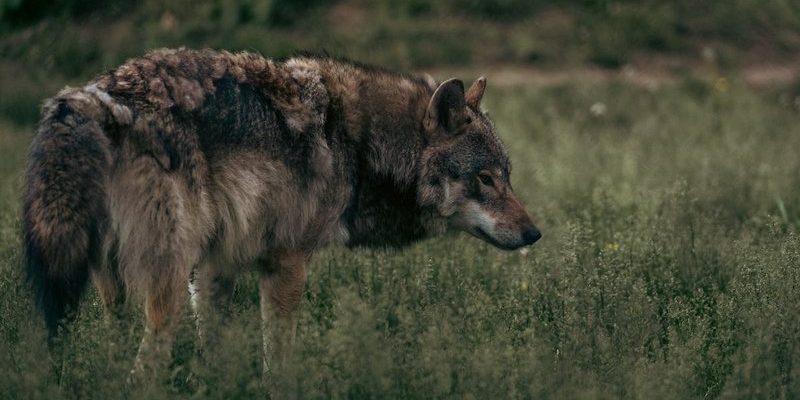
Picture this: you’re strolling through a grassy field, and you notice odd holes scattered around. At first glance, it might seem like a regular case of critters digging around. But these are the tell-tale signs of wolf worm activity. Learning to identify these signs can provide insights into animal health and the ecosystem, which is crucial for wildlife rehabilitation and management. Let’s dig deeper into the fascinating world of wolf worms and how to spot their lurking signs in the wild.
What Are Wolf Worms?
Wolf worms are actually a type of larvae that infect various animals, especially rodents and sometimes larger mammals, including livestock. They find their way into the host through a process that sounds almost like a horror movie plot. Adult bot flies lay eggs near areas where these animals frequent. Once the eggs hatch and the larvae make their way inside, they settle in, causing quite a ruckus.
These little critters are notorious for creating waxy burrows in the skin of their hosts, leading to discomfort and potential health issues. The larvae feed on the host’s nutrients, hindering overall health. Think of it like a guest who overstays their welcome, causing more trouble than they’re worth.
Identifying Wolf Worm Burrows
So, how do you spot the signs of wolf worms in the wild? First, it’s important to identify the burrows they leave behind. These aren’t just any holes; they often appear as small, neat openings in the ground, sometimes with soil pushed up around the edges. You might see a few strands of grass or debris collected around the entrances, hinting at frequent activity.
These burrows can often be differentiated from those of other digging animals, like moles or voles, as they tend to be more shallow. If you come across a hole that seems oddly crisp and well-defined, it could signal wolf worm activity. Always look around for droppings or other signs—these can provide clues about what type of animal is involved.
Common Animals Affected by Wolf Worms
Wolf worms primarily target smaller mammals, though they can occasionally affect larger animals. The usual suspects include:
- Rodents: Mice and rats are common hosts.
- Rabbits: These furry friends are often found with signs of infection.
- Livestock: Sheep and goats can also be affected, which can lead to economic losses for farmers.
Each of these animals reacts differently to the presence of larvae. For instance, rodents might show signs of irritation, while livestock might suffer from weight loss and lethargy. If you’re observing wildlife, knowing which animals are affected can help you assess the health of the population.
Behavioral Signs in Infected Animals
If you’re lucky enough to spot an animal in the wild, keep an eye on its behavior. Infected animals often display noticeable changes. You might see them scratching or biting at their skin more than usual. This kind of discomfort indicates something unusual happening beneath the surface.
You may also notice a lack of energy. Infected animals could exhibit signs of distress, such as limping or isolating themselves from the group. This behavior can help you decide whether to intervene or report the sighting to wildlife authorities for further investigation.
The Ecosystem Impact of Wolf Worms
Wolf worms don’t just impact individual animals; they also affect the broader ecosystem. Infected animals may become less active, which can disrupt their role as prey or competitors within their environment. This, in turn, can affect predators that rely on these animals as a food source.
Additionally, a rising population of wolf worms can indicate underlying environmental issues, like habitat degradation or pollution, which can lead to a cascade of effects on local wildlife. Here’s the thing: understanding these impacts could help conservationists develop strategies for managing animal populations and maintaining ecological balance.
How to Help Infected Animals
If you suspect an animal is infected with wolf worms, there are certain steps you can take to help. First, it’s vital to keep a safe distance—wild animals can be unpredictable when they’re in distress. If you’re in a position to assist, consider:
- Contacting Wildlife Rehabilitation Centers: Professionals are trained to handle these situations.
- Monitoring the Animal: Keep an eye on its behavior to provide updates to professionals.
- Avoiding Direct Contact: Always prioritize your safety and the animal’s well-being.
In many cases, it will be best to leave the situation in the hands of experts who can evaluate the animal’s condition and provide proper treatment.
Understanding the field signs of wolf worm burrows in animals isn’t just about spotting a hole in the ground. It’s about connecting the dots to see how infections affect our wildlife and the ecosystem at large. Whether you’re a wildlife enthusiast or just someone curious about nature, knowing how to identify these signs can make you a more informed observer.
Next time you’re outside, take a moment to look closely at the ground and the animals around you. You just might uncover a hidden world of activity beneath your feet. Remember, nature’s clues are all around—sometimes, they just need a keen eye to spot them.

